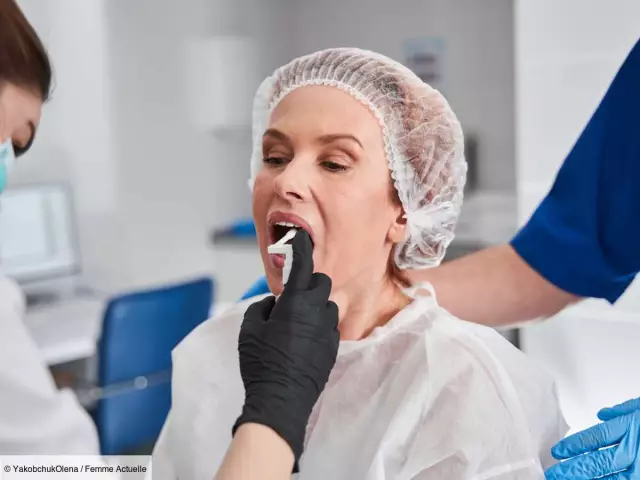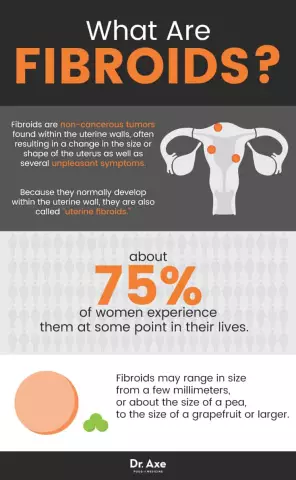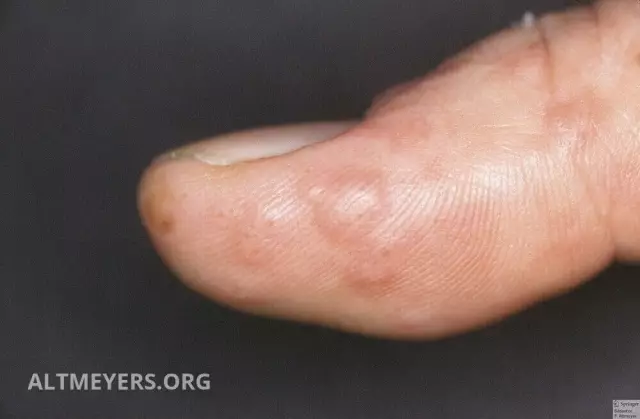- Author Rachel Wainwright [email protected].
- Public 2023-12-15 07:39.
- Last modified 2025-11-02 20:14.
Erosion of the esophagus
Esophageal erosion is a defect in the lining of the lining of the esophagus. This defect is a complication of the hiatal hernia, which develops due to the movement of part of the organs from the abdominal cavity to the thoracic region through the diaphragmatic esophageal opening. Most people with esophageal erosion are unaware of their disease, citing the absence of severe symptoms or errors in food.
The reasons for the development of erosion of the esophagus

Erosion of the esophagus is preceded by the following pathological conditions:
- Increased intrauterine pressure;
- Weakened muscle tone of the esophageal walls;
- A decrease in the length of the esophagus due to an inflammatory scar process or a tumor;
- Atrophy of the left lobe of the liver;
- Stretching of the esophageal opening of the diaphragm;
- Lack of adipose tissue under the diaphragm;
- Curvature of the thoracic spine in the form of kyphosis, which occurs more often in older people.
All of the above factors contribute to the appearance of sliding, axial hernias, after which erosion of the esophagus develops.
Clinic and symptoms of esophageal erosion
Sometimes the clinical picture with erosion of the esophagus can be asymptomatic, erased and indistinct. But a greater number of patients have complaints of dull or sharp pains behind the chest, in the abdominal cavity or with various irradiation, which resemble pain in angina pectoris. Pain and discomfort usually occurs when eating or moving body position. Painful sensations can be accompanied by a feeling of fullness and fullness, which tend to decrease when the body takes an upright position.
The symptoms of esophageal erosion are as follows:
- Painful swallowing (dysphagia);
- Belching;
- Hiccups;
- Regurgitation;
- Vomiting;
- Increased production of saliva in the mouth;
- Unpleasant odor from the mouth.
Diagnosis of the disease
When this diagnosis is established, the patient undergoes an X-ray examination, with the help of which it is possible to accurately determine the presence of an esophageal hernia or reflux (gastrointestinal reflux). Additional studies are also carried out using esophagotonokymography, general and biochemical analysis of blood, urine, colonoscopy and fecal occult blood test.
Esophageal erosion treatment

Treatment of esophageal erosion with medication should be carried out under medical supervision. Drug therapy includes alginates, antacids and prokinetics:
- Alginates are capable of forming a thick foam on the inner surface of the stomach, which has a therapeutic effect during each reflux (the contents are thrown into the esophagus);
- Antacids include almagel, which is able to cure moderate symptoms. For treatment, it is often used - every one and a half or two hours after meals and before bedtime;
- Prokinetics reduce the contact time of the esophagus with hydrochloric acid, improve gastric emptying, and increase the pressure in the lower esophageal sphincter. Motilium, or domperidone, belongs to prokinetics. It should be consumed four times a day for ten milligrams for a long time;
- Pariet (proton pump inhibitor) twenty milligrams daily for eight to ten weeks.
Treatment of erosion of the esophagus with folk remedies
- Thirty minutes before meals, three or four times a day, fifty milliliters of potato juice should be taken for one and a half to two months. Three to four treatment courses should be completed per year. Preparation of potato juice: grate peeled potatoes and squeeze the juice through cheesecloth or get juice using a juicer;
- Thirty minutes before meals, take 25-30 milliliters of potato and carrot juice for one and a half to two months. Three or four such treatment courses should be completed per year;
- Take twenty grams of linden flowers, calendula, fireweed and ten grams of flowers of horsetail, immortelle, celandine, St. John's wort, pharmacy chamomile, valerian root and fennel fruits. Grind all the plants and place them in a glass jar, boil one tablespoon of the crushed plants in 500 ml of boiling water over low heat for five to seven minutes, let it brew for two to three hours and filter. Take this infusion thirty minutes before meals three to four times a day warm, 100-120 milliliters.
YouTube video related to the article:
The information is generalized and provided for informational purposes only. At the first sign of illness, see your doctor. Self-medication is hazardous to health!






